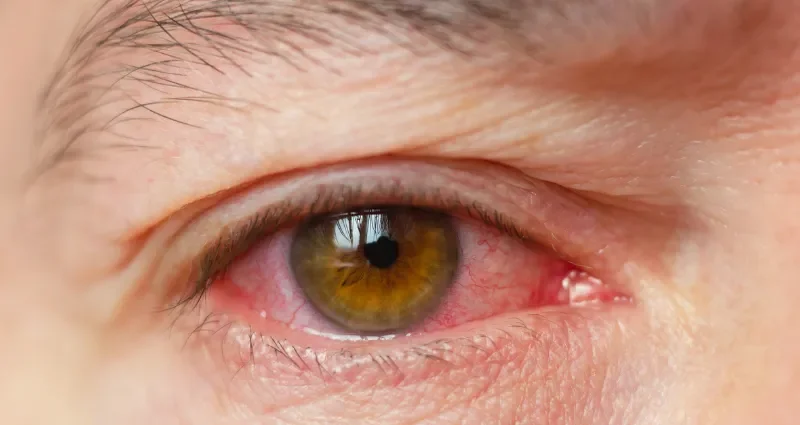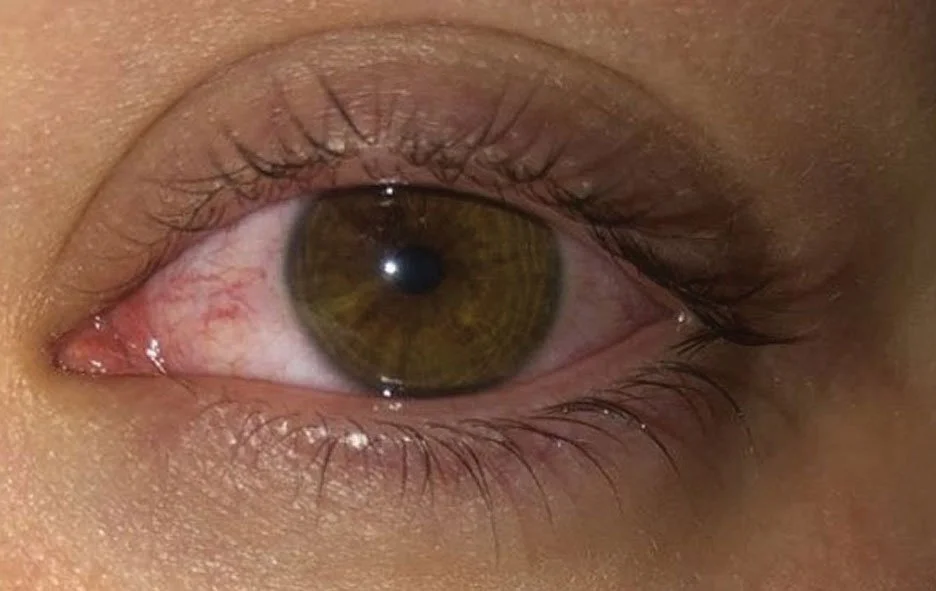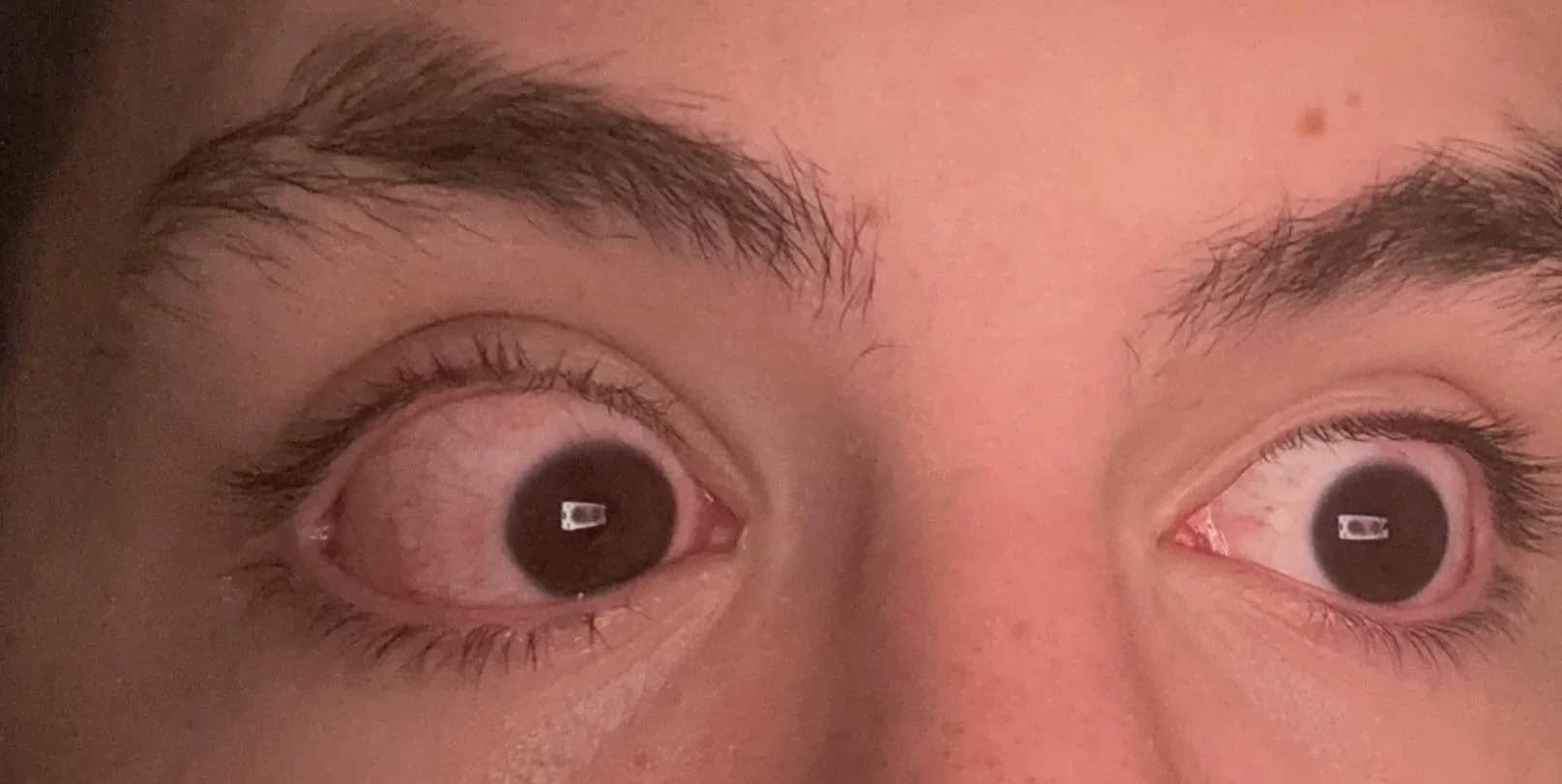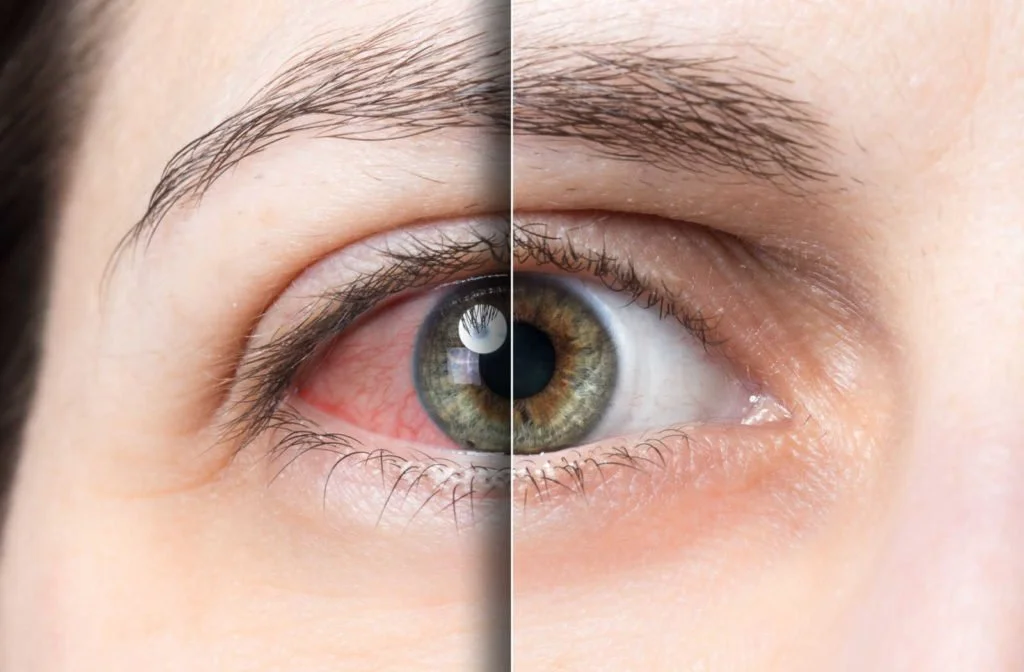Red Eye After Contact Lens Wear: Causes, Risks, and Safe Solutions
By Dr Brendan Cronin, Ophthalmologist
Many patients wear contact lenses every day to enjoy clear vision without glasses. Contact lenses are safe medical devices when used properly, but when issues arise, they can quickly lead to discomfort or even serious complications. One of the most common complaints eye doctors see in contact lens wearers is red eye after contact lens wear.
For some people, this redness is mild and temporary, caused by irritation or dryness. For others, it may signal more serious conditions such as microbial keratitis, corneal ulcers, or giant papillary conjunctivitis. Recognizing the difference between a simple irritation and a potentially sight-threatening infection is critical.
The first step when patients notice eye redness, irritation, or pain is to discontinue contact lens wear immediately and consult an eye doctor. Ignoring early warning signs may lead to corneal scarring, vision loss, or even blindness if left untreated.
Common Causes of Red Eye in Contact Lens Wearers
Contact Lens Overwear & Extended Wear
Wearing lenses too long or sleeping in them reduces oxygen to the cornea, causing irritation, inflammation, and in some cases, corneal damage.
Poor Hygiene & Contaminated Contact Lens Solution
Failure to replace lens cases, reusing old solution, or not cleaning properly can introduce bacteria, leading to eye infection and redness.
Dry Eye Symptoms and Irritation
Many patients experience dry eyes while wearing lenses. Lack of lubrication and oxygen can make the eyes red, irritated, and painful, often requiring artificial tears or lubricating eye drops.
Recognizing the Warning Signs Early
Early recognition of common signs makes a major difference in preventing severe complications. Patients should never ignore changes to their eye health when wearing lenses.
Eye redness and irritation are often the first indicators. If redness persists after removing lenses, it may suggest more serious infections or inflammation.
Blurred vision or blurry vision while wearing or after removing lenses can mean the cornea is affected.
Light sensitivity (photophobia) can signal corneal involvement, particularly in microbial keratitis.
Pain, foreign body sensation, or a red ring around the cornea are concerning signs of possible corneal ulcers.
Watery eyes, discharge, or swelling often point to bacterial or viral infections.
If any of these symptoms occur, the safe step is to stop wearing lenses and consult an ophthalmologist. Many patients delay, hoping the symptoms will resolve on their own, but untreated infections can rapidly worsen and threaten clear vision.
Potential Risks and Complications of Ignoring Symptoms
Eye Infections and Microbial Keratitis
Contact lens-related microbial keratitis is one of the most serious complications. This infection can progress quickly, damaging the cornea if not treated promptly.
Corneal Ulcers, Scarring, and New Blood Vessels
Corneal ulcers may lead to corneal scarring. In severe cases, abnormal new blood vessels grow across the cornea, permanently affecting vision.
Vision Loss and Blindness in Severe Cases
If infections remain untreated, they can cause irreversible vision loss or blindness. Early treatment significantly reduces these risks.
When to Stop Wearing Lenses and Seek Help
The safest action when experiencing a red eye after contact lens wear is to immediately discontinue lens use. Continuing to wear lenses when the eyes are already irritated deprives the cornea of oxygen, worsens inflammation, and increases the risk of microbial infection.
Switching to glasses during this period allows the eyes to recover. Patients should never attempt to “push through” the discomfort by continuing lens use. This can lead to eye complications, including corneal ulcers or giant papillary conjunctivitis.
An ophthalmologist or optometrist can perform a careful examination of the cornea to identify whether redness is caused by dryness, inflammation, or infection. Sometimes, the issue is as simple as poorly fitting lenses. In other cases, more serious infections require urgent intervention.
The golden rule: if you experience pain, blurred vision, or worsening redness, seek immediate medical attention.
Treatment Options for Red Eye After Contact Lens Wear
Lubricating or Artificial Tears
For mild dry eye symptoms or irritation, lubricating eye drops or artificial tears can help restore comfortable vision.
Antibiotics for Bacterial Infections
If bacteria are the cause, doctors prescribe antibiotic eye drops to stop the infection and protect the cornea.
Corticosteroid Eye Drops
In certain cases of inflammation, corticosteroid eye drops may be prescribed under careful supervision to alleviate symptoms and reduce scarring.
PTK Laser for Corneal Scarring
Severe cases of corneal scarring after infection may benefit from a PTK (photo-therapeutic keratectomy) laser, which smooths the cornea and can restore clearer vision.
Other Medical Devices and Supportive Care
Bandage contact lenses or other medical devices may be used under doctor supervision to alleviate discomfort and protect healing corneal tissue.
Preventing Red Eye: Best Practices for Safe Lens Use
The best way to protect eye health is by preventing problems before they occur. Safe lens wear depends on hygiene, fit, and proper replacement schedules.
Always follow lens replacement schedules. Using new lenses as recommended lowers the risk of infection. Overusing old lenses increases irritation and bacterial contamination.
Ensure lenses fit properly. Ill-fitting lenses rub against the cornea, causing micro-trauma and irritation that can lead to more serious infections.
Avoid extended wear unless approved by your doctor. Overnight wear greatly increases the risk of microbial keratitis. Even “extended wear” lenses should be used cautiously.
Use fresh contact lens solution daily and replace lens cases regularly. Old or contaminated solution leads to bacterial growth and eye redness.
Alleviate discomfort early. If you experience dry eye symptoms, use lubricating eye drops and speak with your eye doctor about artificial tears or alternative treatments.
Do not ignore inflammation or pain. Small problems can quickly progress into sight-threatening complications if left untreated.
By maintaining these habits, many patients can safely wear lenses long-term while enjoying clear vision and comfortable vision.
Conclusion: Protecting Your Eye Health with Professional Care
A red eye after contact lens wear should never be ignored. While mild eye irritation may resolve with lubricating drops and rest, more serious infections require prompt medical treatment. Dr Brendan Cronin, ophthalmologist, emphasizes the importance of seeing an eye doctor early to identify whether the problem is minor or potentially sight-threatening.
For many patients, stopping lens use early, treating dry eye symptoms, and practicing safe hygiene habits can quickly relieve irritated eyes and prevent further complications. However, in severe cases, infections such as microbial keratitis or corneal ulcers may threaten sight, requiring antibiotics, corticosteroid eye drops, or even surgical treatment.
By following Dr Brendan Cronin’s advice on good hygiene, replacement schedules, and professional follow-up, patients can maintain healthy eyes, prevent irritation, and continue enjoying comfortable, clear vision.




